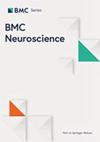Norepinephrine protects against cochlear outer hair cell damage and noise-induced hearing loss via α2A-adrenergic receptor
IF 2.4
4区 医学
Q3 NEUROSCIENCES
引用次数: 0
Abstract
The cochlear sympathetic system plays a key role in auditory function and susceptibility to noise-induced hearing loss (NIHL). The formation of reactive oxygen species (ROS) is a well-documented process in NIHL. In this study, we aimed at investigating the effects of a superior cervical ganglionectomy (SCGx) on NIHL in Sprague-Dawley rats. We explored the effects of unilateral and bilateral Superior Cervical Ganglion (SCG) ablation in the eight-ten weeks old Sprague-Dawley rats of both sexes on NIHL. Auditory function was evaluated by auditory brainstem response (ABR) testing and Distortion product otoacoustic emissions (DPOAEs). Outer hair cells (OHCs) counts and the expression of α2A-adrenergic receptor (AR) in the rat cochlea using immunofluorescence analysis. Cells culture and treatment, CCK-8 assay, Flow cytometry staining and analysis, and western blotting were to explore the mechanisms of SCG fibers may have a protective role in NIHL. We found that neither bilateral nor unilateral SCGx protected the cochlea against noise exposure. In HEI-OC1 cells, H2O2-induced oxidative damage and cell death were inhibited by the application of norepinephrine (NE). NE may prevent ROS-induced oxidative stress in OHCs and NIHL through the α2A-AR. These results demonstrated that sympathetic innervation mildly affected cochlear susceptibility to acoustic trauma by reducing oxidative damage in OHCs through the α2A-AR. NE may be a potential therapeutic strategy for NIHL prevention.去甲肾上腺素通过α2A-肾上腺素能受体防止耳蜗外毛细胞损伤和噪声诱导的听力损失
耳蜗交感系统在听觉功能和易患噪声性听力损失(NIHL)方面起着关键作用。活性氧(ROS)的形成是 NIHL 的一个有据可查的过程。本研究旨在探讨上颈神经节切除术(SCGx)对 Sprague-Dawley 大鼠 NIHL 的影响。我们研究了单侧和双侧颈上神经节(SCG)切除术对 8-10 周大的 Sprague-Dawley 雌雄大鼠 NIHL 的影响。听觉功能通过听性脑干反应(ABR)测试和失真产物耳声发射(DPOAEs)进行评估。使用免疫荧光分析大鼠耳蜗中外毛细胞(OHCs)的数量和α2A肾上腺素能受体(AR)的表达。通过细胞培养和处理、CCK-8测定、流式细胞术染色和分析以及Western印迹分析,我们探讨了SCG纤维在NIHL中可能发挥保护作用的机制。我们发现,双侧或单侧SCGx都不能保护耳蜗免受噪声暴露的影响。在 HEI-OC1 细胞中,应用去甲肾上腺素(NE)可抑制 H2O2 诱导的氧化损伤和细胞死亡。NE可通过α2A-AR阻止ROS诱导的OHCs和NIHL氧化应激。这些结果表明,交感神经支配可通过α2A-AR减少OHCs中的氧化损伤,从而轻度影响耳蜗对声创伤的敏感性。NE可能是预防NIHL的一种潜在治疗策略。
本文章由计算机程序翻译,如有差异,请以英文原文为准。
求助全文
约1分钟内获得全文
求助全文
来源期刊

BMC Neuroscience
医学-神经科学
CiteScore
3.90
自引率
0.00%
发文量
64
审稿时长
16 months
期刊介绍:
BMC Neuroscience is an open access, peer-reviewed journal that considers articles on all aspects of neuroscience, welcoming studies that provide insight into the molecular, cellular, developmental, genetic and genomic, systems, network, cognitive and behavioral aspects of nervous system function in both health and disease. Both experimental and theoretical studies are within scope, as are studies that describe methodological approaches to monitoring or manipulating nervous system function.
 求助内容:
求助内容: 应助结果提醒方式:
应助结果提醒方式:


